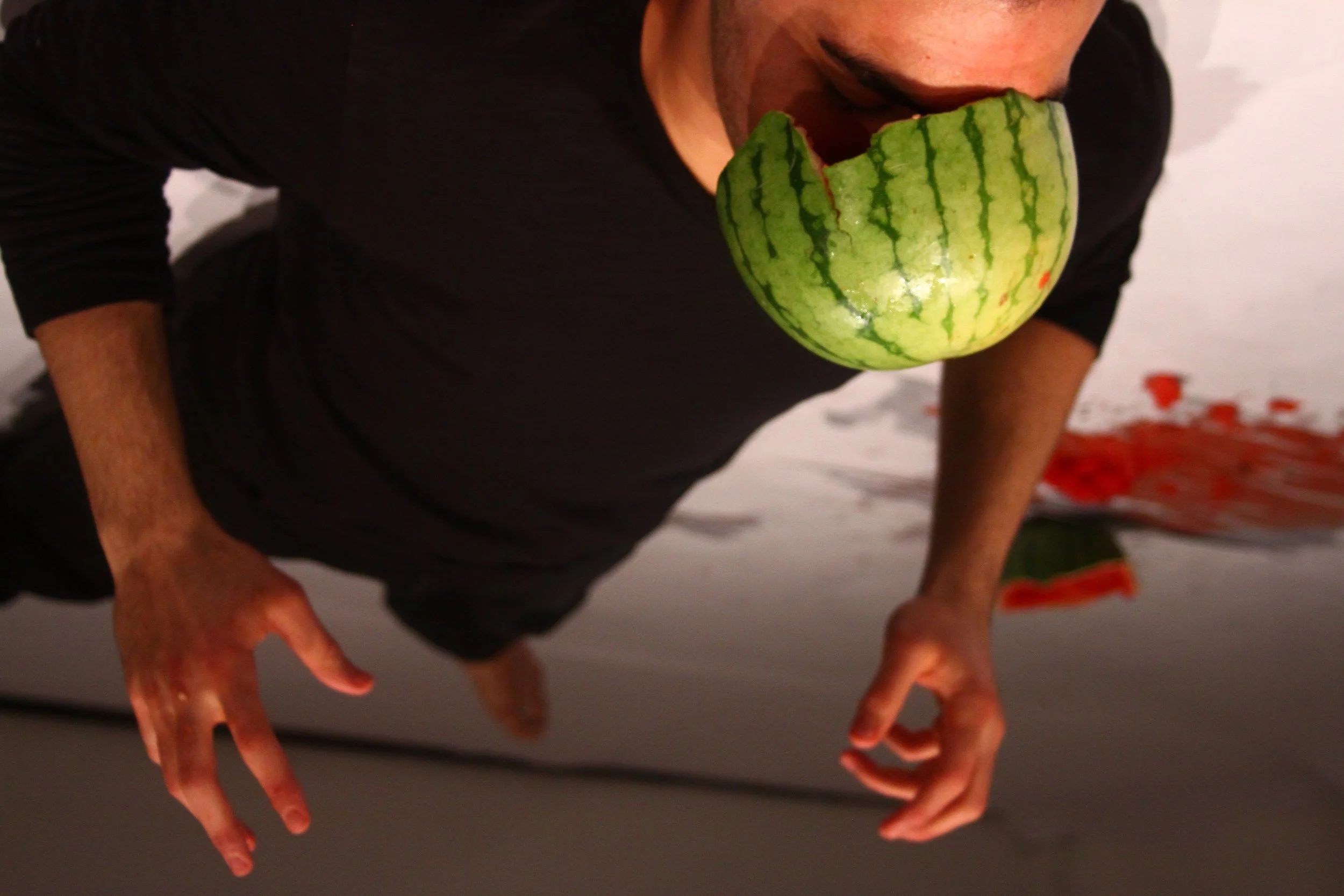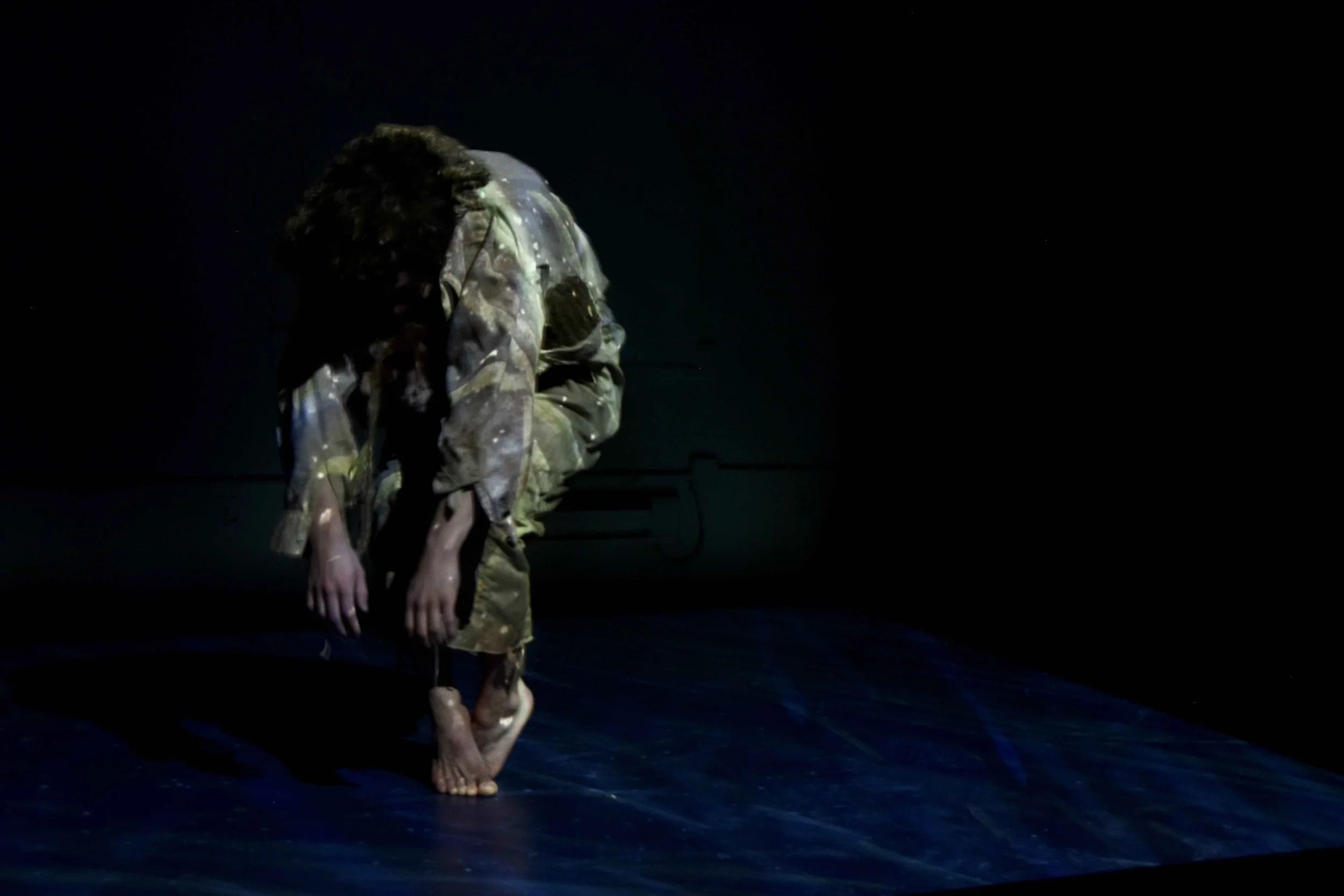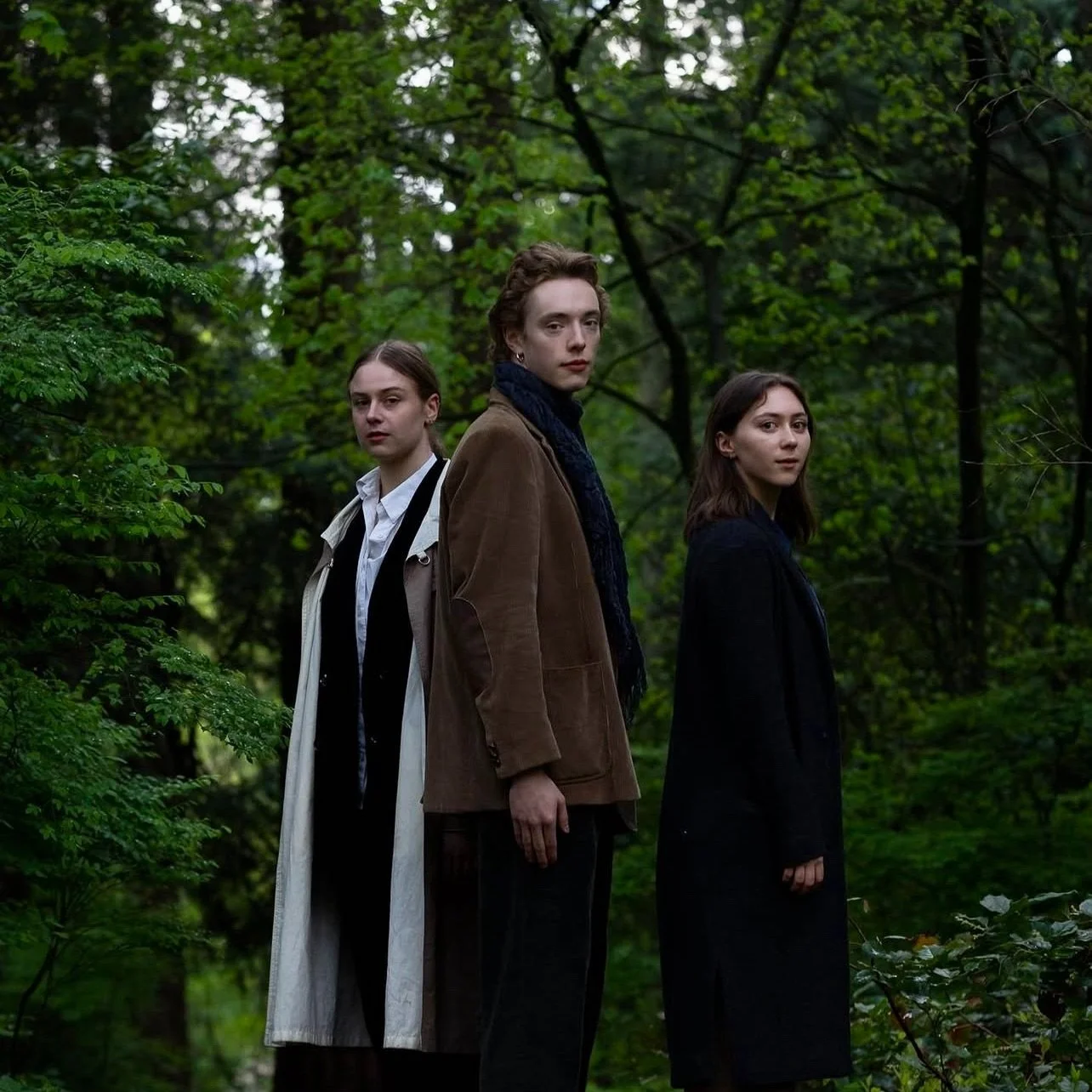Watermelons and water, red and blue meet in The Biting School's dance double bill
Dance soloists Arash Khakpour and Kelly McInnes pair two pieces that play innovatively with props
Kelly McInnes in Blue Space. Photo by Sophia Wolfe
Arash Khakpour in Melon Piece. Photo by Luciana D'Anunciação
The Biting School presents Blue Space and Melon Piece from March 3 to 5 at the Roundhouse Community Arts & Recreation Centre
ON A BASIC level, the pairing Arash Khakpour and Kelly McInnes’s solo dance works simply has a great visual appeal—one focusing on the blue of a declining ocean, the other on the brilliant red of an open watermelon.
But there are much more complex reasons their two works, Blue Space and Melon Piece, fit together well on a program—despite their vastly different moods. And it makes sense that these two mavericks on Vancouver’s contemporary-dance scene should share a double bill, presented here by Khakpour’s The Biting School (which he runs with brother and theatre artist Aryo.)
Though McInnes and Khakpour have grown up, trained, and danced together, that’s not why their works complement each other, McInnes asserts on a conference call with Khakpour. “It feels like a rebellion to our training that we both share, and kind of expanding on what we thought dance or performance could be,” explains the artist. “We use our whole selves and we get vulnerable and messy–we go deep into the layers of human experience.”
Khakpour elaborates that neither artist is interested in creating superhuman virtuosic dance. “It feels like we’re both as human beings trying not to deny this darker side of ourselves—the darkness and the pain inside of us,” he says. “We’re vibrant and guttural and visceral dance onstage.”
As you have probably deduced by now, McInnes and Khakpour’s work is intense—but in vastly different ways. And both artists love to use props in fascinating ways. As McInnes puts it: “I definitely don't think I could make anything without objects. I feel inspired to use things, to give context to them.”
In the haunting, meditative, and deeply personal Blue Space, a naked McInnes wraps and unwraps herself in a gigantic, transparent sheet of plastic. It’s an exploration of our intrinsic connection to the water that makes up our bodies and the oceans of our Earth.
“I was in a dark place when I first started making the piece,” reveals McInnes, who began creating Blue Space in 2019. “It felt hopeless. I was feeling a lot of climate grief, and seeing images of animals dying, stuffed with plastic, and thinking about extinction. I wanted to make something to process those feelings.”
For his part, Iranian-Canadian performer Khakpour has been working on Melon Piece for about a decade, and says it came to him as a simple image: a man, a rope, and a watermelon. Things, shall we say, get messy; as Khakpour quips, “I’m trying to elevate the mess—visually and emotionally.”
But the solo has changed as he has changed over the years.
“As a person, obviously the pandemic has changed me,” Khakpour says. “I see that transformation in myself because I’m alone in the piece. Before it was a response to the world: I was against the world and the world was against me. But now I feel like I’m portraying this character and I feel lucky to be a part of this world.”
There is frustration in Khakpour’s work: it’s equal parts Beckett and Sysephean in the struggle it portrays of a man trying to reach the elusive watermelon. But it’s also funny—a light contrast to the darker ruminations of McInnes’s Blue Space.
The only slight challenge? “I’m very unlucky because it's not watermelon season,” Khakpour says.
But fear not: He has a case coming in to the Sunshine Market, meaning there will be plenty of red to contrast with all that blue.















